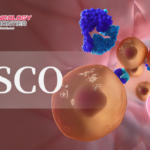
The 29th Annual Meeting of the European Hematology Association (EHA) was held from June 13-16, 2024, in Madrid, Spain. As the largest international event in the field of hematology in Europe, this conference attracts numerous renowned experts and scholars from around the world to share and discuss innovative concepts, the latest scientific research, and clinical study results in hematology. To gain a deeper understanding of the latest research in Chronic Myeloid Leukemia (CML), "Oncology Frontier - Hematology Frontier" has invited Professor Huanling Zhu from West China Hospital of Sichuan University, to provide an in-depth interpretation.Research Background
TFR has become the ultimate goal of CML treatment. However, the best method to achieve sustained deep molecular response (DMR) and TFR remains a topic of discussion. The SUSTRENIM trial, launched in 2016, is an international, multicenter, prospective, randomized, double-arm study aimed at evaluating the DMR and TFR rates in newly diagnosed CP-CML patients randomized to nilotinib (NIL) or imatinib (IM) treatment groups. Patients in the IM group who did not achieve optimal response were switched to the NIL group. Patients were stratified by Sokal score. Those who achieved MR4.0 within three years and maintained it until the end of the fourth year were considered for treatment discontinuation.
Research Objective
The analysis aims to report the proportion of patients eligible for treatment discontinuation and the TFR rate one year after stopping treatment.
Research Methods
Baseline characteristics (e.g., age, gender, ELTS and Sokal scores, BCR::ABL1 subtype) of patients who met the criteria for treatment discontinuation were compared to those who did not maintain MR4.0 using Fisher’s exact test or Wilcoxon test. The probability of successful TFR at 12 months post-TKI discontinuation was analyzed using the Kaplan-Meier method. In the event-free survival (EFS) analysis, events were defined as molecular relapse (loss of MR3.0 or confirmed loss of MR3.0), progression, and death.
Research Results
Of the 448 patients randomized, 314 (70%) had at least 48 months of follow-up and evaluable TFR status at the time of analysis. The IM group included 154 patients, while the NIL group had 160. Overall, 35% of patients maintained MR4.0 (four consecutive tests with MR4.0), with 36% in the IM group (56 patients) and 33.7% in the NIL group (54 patients). Sustained MR4.0 was significantly associated with low disease risk according to ELTS (80% vs. 47.7%, P<0.0001) and Sokal scores (53% vs. 35.7%, P=0.002). There were no significant differences in age (P=0.27), gender (P=0.07), and BCR::ABL1 subtype (P=0.24) between the groups. Sixty-two patients (40%) in the IM group crossed over to the NIL group, with 46 patients switching in the first 12 months and 16 patients after the first year. At 12 months, the TFR rate was 81.8% (95% CI: 71.1-94.1) in the NIL group and 65.5% (95% CI: 52.1-82.2) in the IM group (P=0.14).
Research Conclusion
Preliminary evaluation from long-term follow-up shows similar treatment discontinuation rates in both groups (56 patients in the IM group and 54 in the NIL group). Switching from IM to NIL, whether early or late, did not increase the proportion of patients meeting the criteria for treatment discontinuation. The 12-month TFR rate, although higher in the NIL group (81.8% vs. 65.5%), did not show a statistically significant difference compared to the IM group.
Expert Commentary
Professor Huanling Zhu: Today, TFR has become the ultimate goal for both doctors and patients in CML treatment. However, the best path to achieve TFR and the ideal treatment discontinuation regimen remain to be further clarified. The SUSTRENIM trial, initiated in 2016, aims to evaluate the depth of molecular response and TFR rates in newly diagnosed CML patients treated with second-generation NIL or first-generation IM.
This study randomly assigned newly diagnosed CML patients to either NIL or IM treatment groups. Patients in the IM group who did not achieve optimal response had the opportunity to switch to NIL treatment. The study stratified patients by Sokal score and ELTS score and set a goal of achieving MR4.0 molecular response within three years and maintaining it for at least one year before considering treatment discontinuation. This report mainly focuses on the proportion of patients who discontinued treatment and the TFR rate one year after stopping treatment.
The study included 448 patients, with nearly equal numbers in both groups. Seventy percent of the patients completed the 48-month follow-up, providing valuable long-term data. Overall, 35% of patients achieved sustained MR4.0, meaning four consecutive molecular tests reached the MR4.0 level of response. Specifically, both the IM and NIL groups performed similarly. Additionally, sustained MR4.0 was significantly associated with low disease risk based on ELTS and Sokal scores, suggesting that disease risk scores should be considered in treatment decisions. Long-term follow-up results showed similar treatment discontinuation and TFR rates in both groups. Although the NIL group had a higher numerical value than the IM group, the difference was not statistically significant. This result suggests that regardless of the TKI drug used, patients who meet the discontinuation criteria have similar success rates post-discontinuation.
Therefore, the long-term follow-up results of the SUSTRENIM trial provide important insights into CML treatment strategies, offering flexibility for clinicians to choose either first- or second-generation TKI drugs based on the patient’s specific situation to achieve optimal treatment outcomes and TFR goals.


